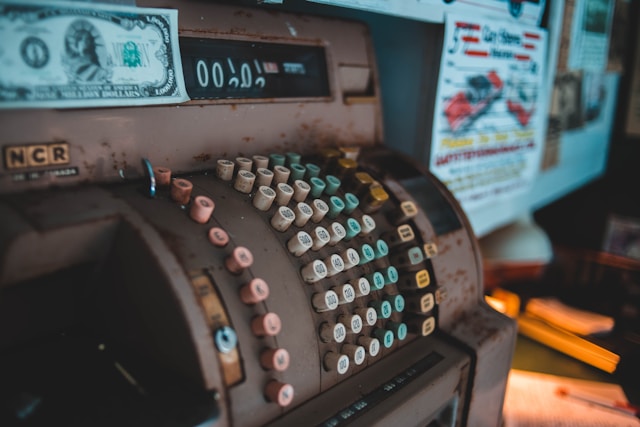Stablecoins Explained: The Ultimate Guide to Understanding and Harnessing their Potential Great

stablecoins explained in today’s rapidly evolving digital landscape, cryptocurrencies have gained significant attention. Among the various types of cryptocurrencies, stablecoins have emerged as a unique category that offers stability and utility. probably read it already: Exploring the Best Cryptocurrency: A Comprehensive Guide. In this comprehensive guide, we will delve into the world of stablecoins, exploring their definition, types, mechanisms, use cases, and regulatory challenges. By the end of this article, you will have a solid understanding of stable coins and how they can reshape the financial industry.
See Also : Exploring the Best Cryptocurrency: A Comprehensive Guide

Stablecoins Explained
Stablecoins explained are a form of cryptocurrency designed to minimize price volatility, making them more reliable for everyday transactions and a viable store of value. Unlike traditional cryptocurrencies like Bitcoin and Ethereum, which are subject to significant price fluctuations, stablecoins aim to maintain a stable value, often pegged to a specific asset or algorithm.
The primary purpose of stablecoins explained is to bridge the gap between the traditional financial system and the world of cryptocurrencies. By providing stability and security, stablecoins offer users the best of both worlds, combining the efficiency and borderless nature of cryptocurrencies with the stability of fiat currencies.
Types of Stablecoins Explained
A. Fiat-backed stablecoins
Fiat-backed stablecoins explained are pegged to a reserve of fiat currency, such as the U.S. dollar or the Euro. These stablecoins are backed by a 1:1 ratio of the underlying fiat currency, ensuring their stability. Examples of popular fiat-backed stablecoins include Tether (USDT), USD Coin (USDC), and TrueUSD (TUSD).
B. Cryptocurrency-backed stablecoins
Cryptocurrency-backed stablecoins explained are collateralized by other cryptocurrencies. The underlying collateral is held in a smart contract, ensuring transparency and redeemability. DAI, created by MakerDAO, is a notable example of a cryptocurrency-backed stablecoin.
C. Algorithmic stablecoins
Algorithmic stablecoins, also known as decentralized stablecoins explained, do not rely on traditional assets or collateral. Instead, they utilize algorithms to maintain stability. These stablecoins adjust their supply dynamically based on market demand and other factors. Ampleforth (AMPL) and Basis Cash (BAC) are examples of algorithmic stablecoins.
How Stablecoins Maintain Stability
A. Collateralization
Collateralization is a key mechanism employed by many stablecoins, particularly fiat-backed and cryptocurrency-backed ones. By maintaining a reserve of assets that back the stablecoin, its value remains pegged and stable. The reserve is often held in audited and trusted financial institutions, ensuring transparency and trust.
B. Price Stabilization Mechanisms
Stablecoins employ various price stabilization mechanisms to counteract fluctuations in demand and supply. These mechanisms may include direct intervention in the market, algorithmic adjustments of the stablecoin supply, or incentives for market participants to stabilize the price. For example, MakerDAO uses a decentralized autonomous organization (DAO) and a system of smart contracts to manage the supply and demand of DAI, ensuring its stability.
Use Cases of Stablecoins Explained
A. Cross-border transactions
Stablecoins offer a compelling solution for cross-border transactions, eliminating the need for intermediaries and reducing transaction costs and settlement times. With stablecoins, individuals and businesses can send and receive funds internationally with ease and at a fraction of the cost compared to traditional methods. Moreover, stablecoins enable financial inclusion for individuals in regions with limited access to banking services.
B. Decentralized finance (DeFi)
Stablecoins play a vital role in the thriving ecosystem of decentralized finance (DeFi). They serve as a medium of exchange, a store of value, and a unit of account within DeFi applications. Stablecoins enable users to lend, borrow, and earn interest on their digital assets all while maintaining a stable value. DeFi platforms leverage stablecoins to create decentralized lending and borrowing protocols, decentralized exchanges, and yield farming opportunities. Examples of popular stablecoins used in DeFi include DAI, USDC, and BUSD.
C. Remittances and Financial Inclusion
Stablecoins have the potential to revolutionize remittance services, particularly for individuals in underserved regions. By utilizing stablecoins, cross-border remittances can become faster, cheaper, and more accessible. Stablecoins eliminate the need for traditional intermediaries, reducing transaction fees and enabling near-instantaneous transfers. This technology opens up new possibilities for financial inclusion, empowering individuals who lack access to banking services to participate in the global economy.
Regulatory Challenges and Concerns
A. Regulatory Landscape for Stablecoins
The rise of stablecoins explained has prompted regulators worldwide to assess their impact and develop appropriate frameworks. Authorities are concerned about potential risks related to money laundering, terrorist financing, and market manipulation. As a result, regulatory scrutiny has increased, with governments and regulatory bodies working to establish guidelines and regulations specific to stablecoins.
B. Concerns Regarding Stablecoin Operations
Critics have expressed concerns about the centralization of certain stablecoins explained, particularly those backed by fiat currencies. The custodial control of the underlying assets and potential lack of transparency raise questions about the stability and trustworthiness of these stablecoins. Moreover, algorithmic stablecoins face challenges related to maintaining stability in volatile market conditions, as their value relies solely on algorithmic mechanisms.
C. Future Outlook and Potential Regulatory Developments
The future of stablecoins explained will be shaped by regulatory developments and market dynamics. Governments and regulatory bodies are actively exploring ways to strike a balance between innovation and consumer protection. It is likely that stablecoin regulations will evolve to address concerns and create a framework that fosters stability, transparency, and financial integrity.
Conclusion Stablecoins Explained
Stablecoins have emerged as a vital component of the digital economy, providing stability and utility to users seeking a reliable medium of exchange and store of value. With their various types and mechanisms, stablecoins offer solutions for cross-border transactions, decentralized finance, and financial inclusion. However, regulatory challenges and concerns surrounding stablecoin operations highlight the need for appropriate oversight and industry standards.
As the financial industry continues to evolve, stablecoins have the potential to revolutionize how we transact, invest, and participate in the global economy. Their ability to combine the advantages of cryptocurrencies with the stability of traditional fiat currencies makes them a powerful tool for individuals, businesses, and even governments.
It is essential for stakeholders, including regulators, industry participants, and users, to collaborate and navigate the evolving landscape of stablecoins responsibly. By addressing concerns, fostering innovation, and establishing a robust regulatory framework, stablecoins can play a transformative role in shaping the future of finance.
And for those of you who want to grow your Instagram account, you can directly use our service free instagram followers and you can like your post on instagram with Free instagram likes feature







